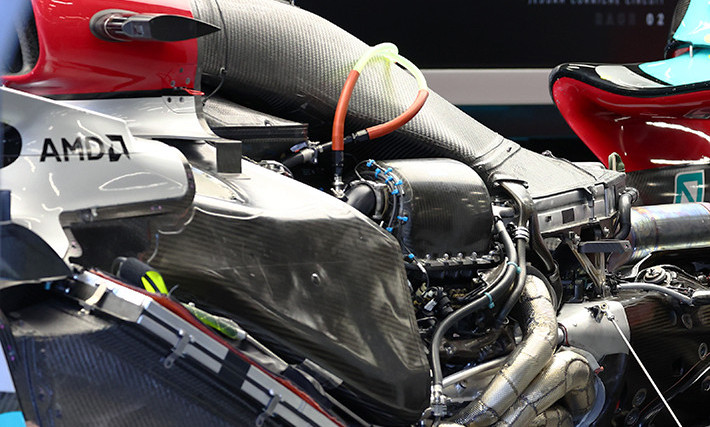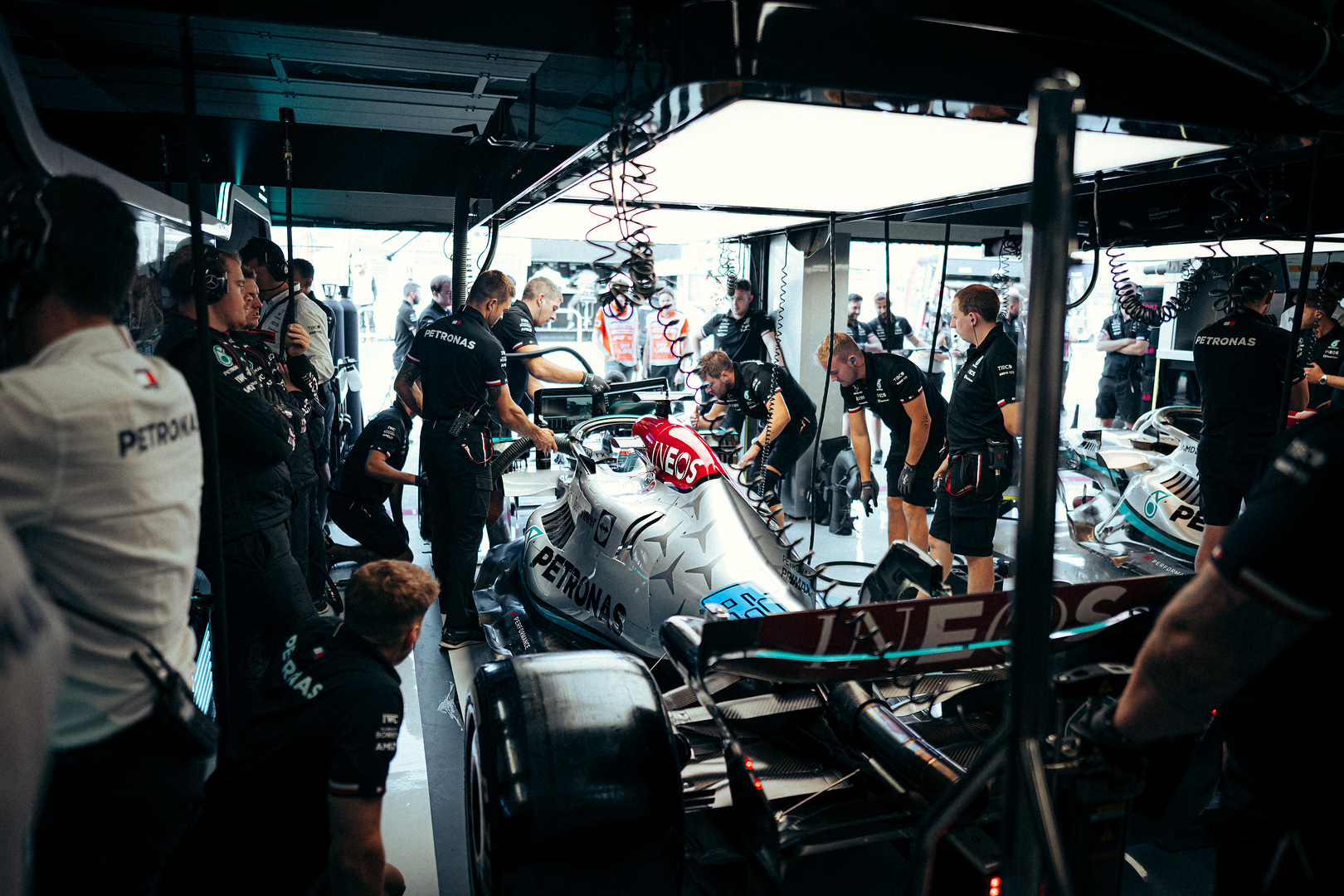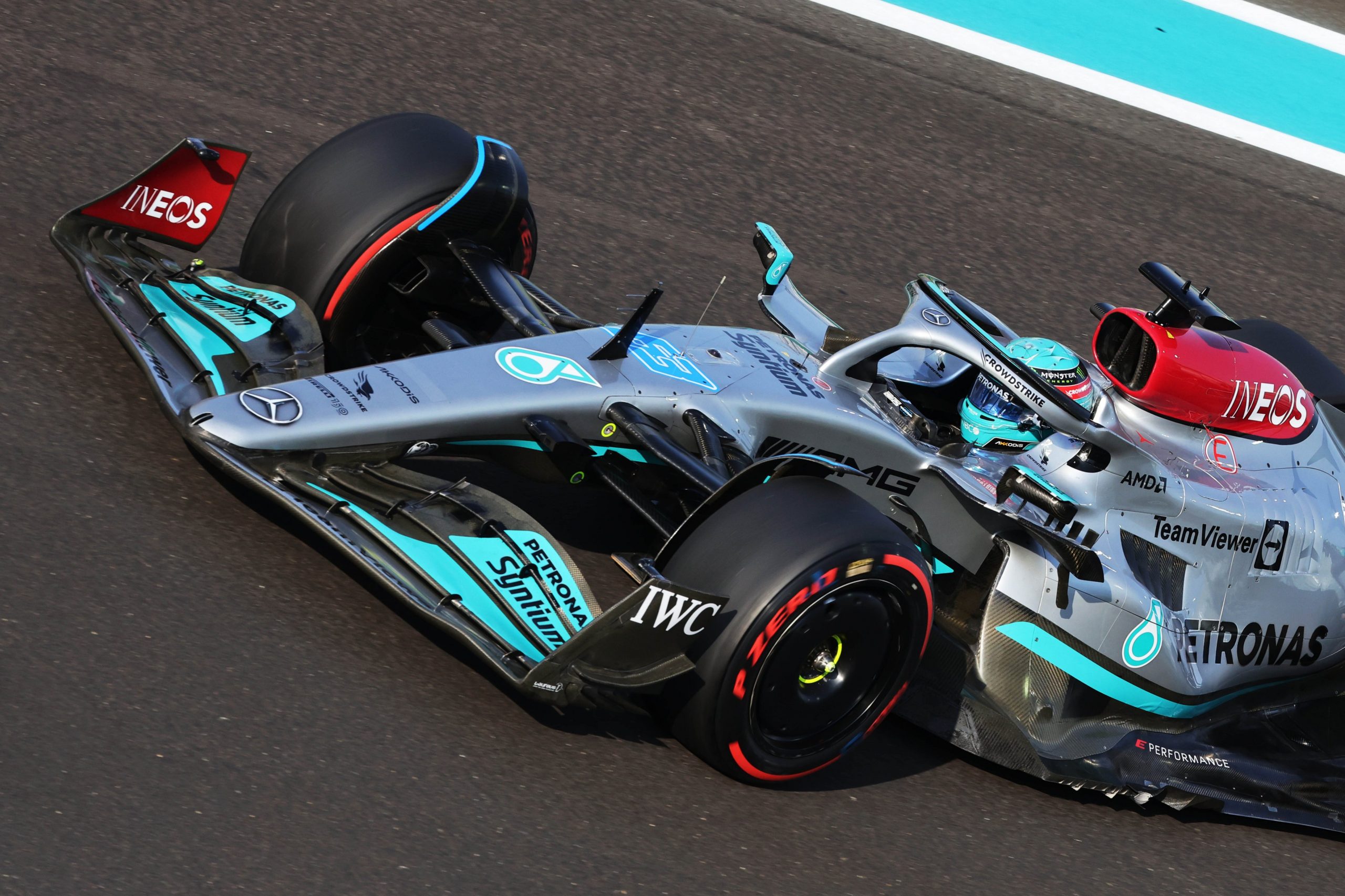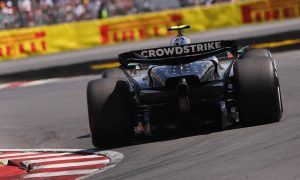
Underperformance and physical hardship for its drivers weren't the only effects caused by Mercedes' bouncing bronco in 2022, with the team revealing that the car's porpoising phenomenon also broke its engines.
Mercedes worked tirelessly through the first half of the season to try and understand and then solve the high-frequency vertical movement at high speed of its W13 silver arrow.
The complex issue generated by the car's design and its ground-effects weighed heavily on the team's results at the outset of its 2022 campaign.
But so did Mercedes' latest specification power unit which unexpectedly wasn't performing to the expectations of the manufacturer's engine department, as Mercedes team boss Toto Wolff explained in an end-of-year video published by the team.

"We came out at the beginning of the season with some wobbles on the power unit," said Wolff, sitting alongside Mercedes HPP managing director Hywel Thomas.
"We didn’t like certain aspects of the deployment or the drive-ability of the power unit. And whilst in the frozen environment, you and your team, you were able to really add on performance and cope with the difficult environment of a bouncing car that was breaking your engine.
"Still we were super-reliable and the engine was performing very well towards the middle of the season and the end."
Read also:
Formula 1's engine regulations and the hardware freeze imposed on manufacturers had indeed left the latter's engineers with very little margin of development on the power unit front, as Thomas explained.
"At the beginning of the season, the two big things that we had was firstly the power was going to get frozen and it was going to be a hardware freeze," explained the Briton. "And that’s what we were going to be using for the next three years.
"So we had a really big development programme over the whole of last year [in 2021] and through that winter and just trying to make sure we landed that it was a real big effort, a really, really big effort.
"And then the second thing we had was the change in the fuel regulations which we knew was going to be a hit for us, and we expected it to be a hit for others.
"With those two quite large changes we just didn't know where we would end up."

But Mercedes troubles were far from over as it soon became clear that its power unit would also bear the brunt of its silver arrow's chronic porpoising complications.
"It was becoming very clear that the engines were taking a hell of a pounding, the bottom of the engines," Thomas explained.
"I think when [Wolff] came up to Brixworth last week and saw some of the parts that were off the race engines, it’s quite a surprise to see exactly how hard they were being hit by the ground.
"And when you see Lewis [Hamilton] and George [Russell] looking a bit uncomfortable getting out of the cars, the PUs were doing much the same."

Eventually however, performance and reliability improved, but it was a daunting task for Mercedes' engine department in Brixworth.
"What's becoming clearer and clearer is the link between the power unit and the chassis," explained Thomas.
"You can't develop them separately, especially if you want to get the performance from it, from this development of non-hardware in the PU.
"You have to match the PU even more beautifully to the chassis, and that – I'd say especially in the second half of the season – is where wome of the gains have been coming.
"And that's a great thing for the future as well".
Keep up to date with all the F1 news via Facebook and Twitter






